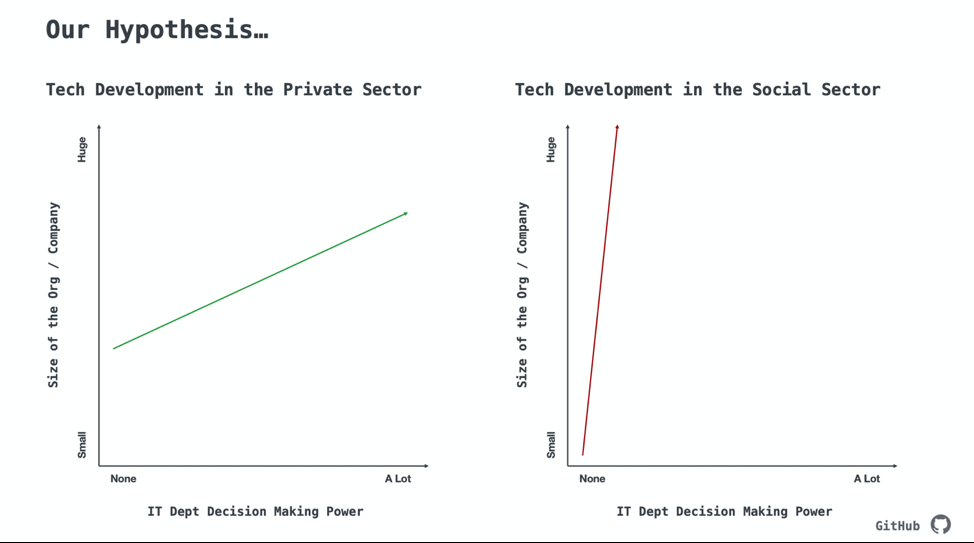Open Source in ICT4D and M&E
My name is Mala Kumar, and for a decade, I worked as a tech for international development (ICT4D) practitioner designing and deploying digital products throughout sub-Saharan Africa, Europe and New York. As is the case with many ICT4D practitioners, much of my work took on a heavy monitoring and evaluation (M&E) component. When I started my career, it was widely thought that Open source (OS) software – software in which the source code is available for anyone to copy and reuse – held the promise of revolutionizing the ICT4D and M&E industries through better collaboration, community and reducing duplicative efforts. Indeed, OS played an important role in my work, with products such as DHIS2 and RapidPro.
In April, I joined the world’s largest hosting company of the OS ecosystem – GitHub – to lead a program on the Social Impact team called Open Source for Good. Despite the lofty expectations much of the ICT4D and M&E industries had for OS when I first started my career, at GitHub, we know that the adoption of OS in ICT4D and M&E now lags far behind the commercial, private sector. “Why?” you may ask.
Here’s one hypothesis we have:

We believe that IT teams working in ICT4D and M&E have significantly less decision-making power and autonomy than commercial, private sector IT teams. As a result, ICT4D and M&E practitioners have to work with IT budgetary decision makers who are not techies themselves. As OS tools are often harder to understand than licensed tools, these decision-makers understandably don’t consider OS solutions.
How we Hope to Help
Our basic idea is to build a middle “layer” in between a GitHub repository of code and a decision maker’s final budget. As a sponsor of MERL Tech DC 2019, we spent two days talking with as many MERL conference attendees as we could. We ran a prioritization exercise of possible features a MERL “Center” might have on GitHub. From this exercise, we know our minimum viable product (MVP) should include all or some of the features in quadrant 1 of the below:
Aggregation of prioritization exercise from ~10 participants

We also spoke to a further 30+ attendees about the tools OS tools they currently use. Anecdotally, mobile data collection, GIS and data visualization were the most common use cases. Many attendees we spoke with are data scientists using R and Python. The United Kingdom’s Department for International Development and German Society for International Cooperation were mentioned as two large donor orgs that are thinking about OS for M&E funding.
What’s Next
In the coming weeks, we’re going to be reaching out to many of the attendees we spoke to at MERL Tech to do user testing on our forthcoming prototype. We are also speaking with a few potential partners working to align efforts. It’s our hope to build out new tools and product features that will help the MERL community better use and develop OS tools.
Get Involved: Email Mala at malakumar85@github.com with a brief intro to you and your work in OS for social good.
The American Evaluation Association is celebrating Integrating Technology into Evaluation TIG Week with our colleagues in the Integrating Technology into Evaluation Topical Interest Group. The contributions all this week to aea365 come from ITE TIG members. Do you have questions, concerns, kudos, or content to extend this aea365 contribution? Please add them in the comments section for this post on the aea365 webpage so that we may enrich our community of practice. Would you like to submit an aea365 Tip? Please send a note of interest to aea365@eval.org. aea365 is sponsored by the American Evaluation Association and provides a Tip-a-Day by and for evaluators.
